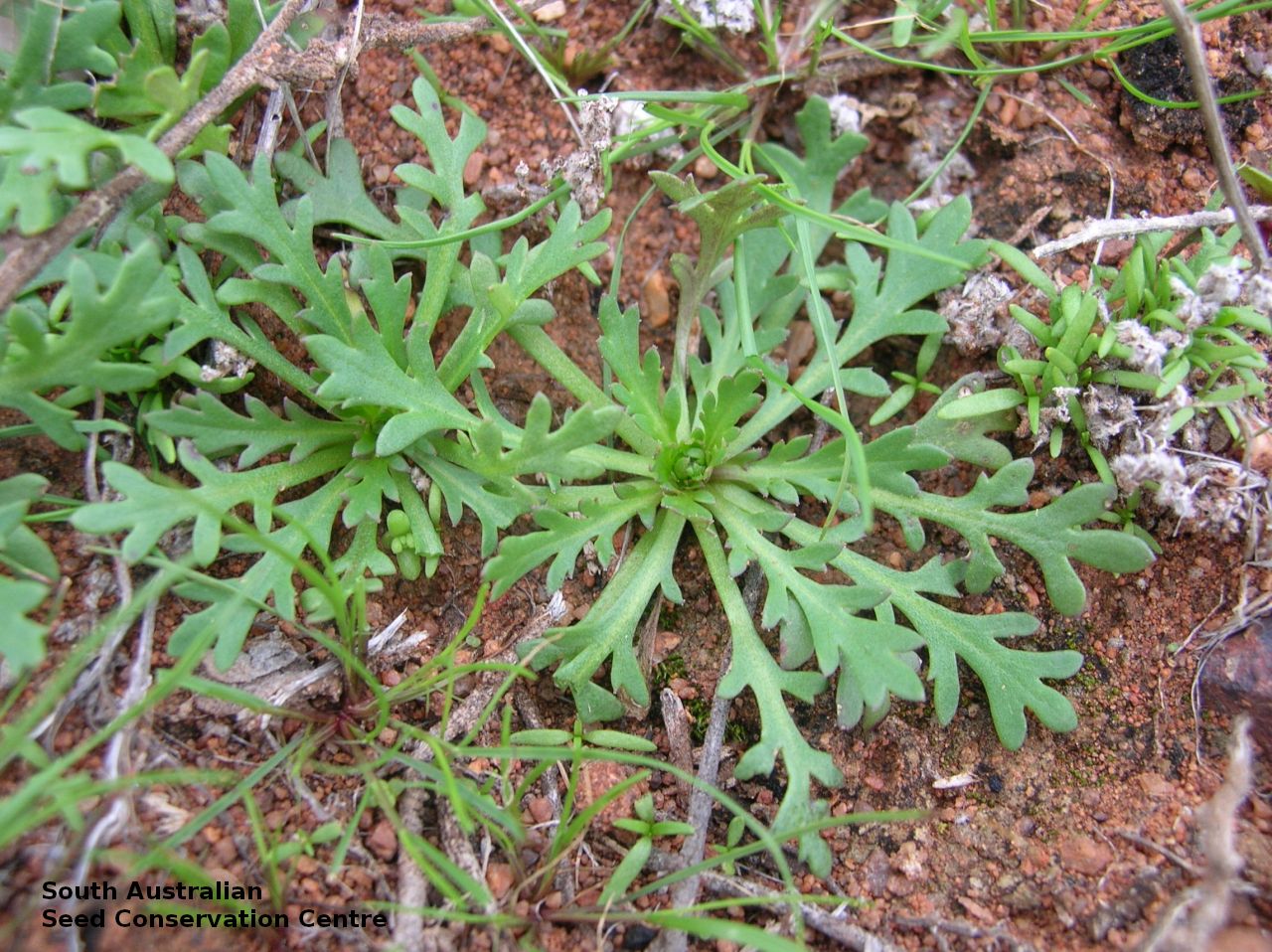
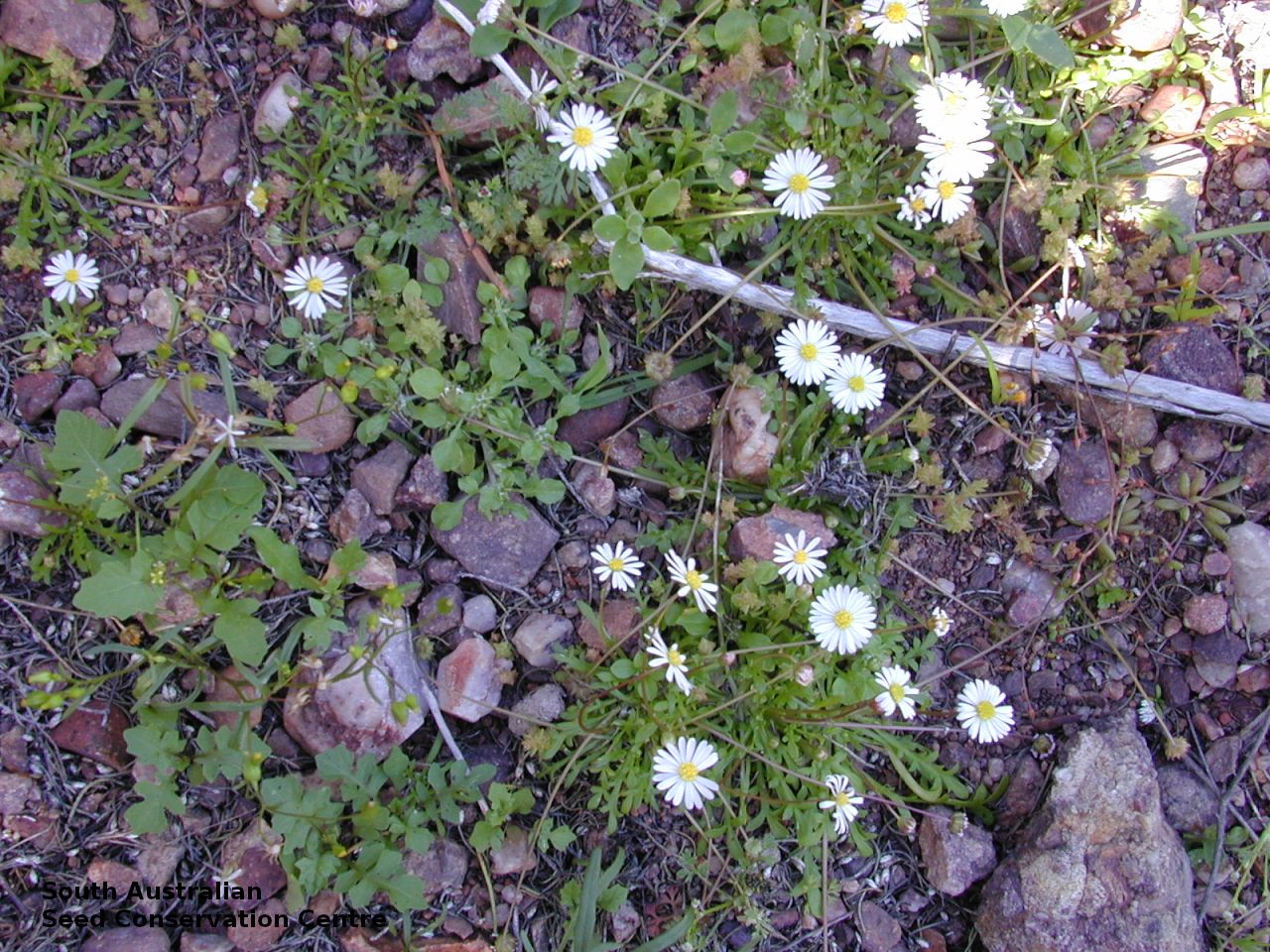
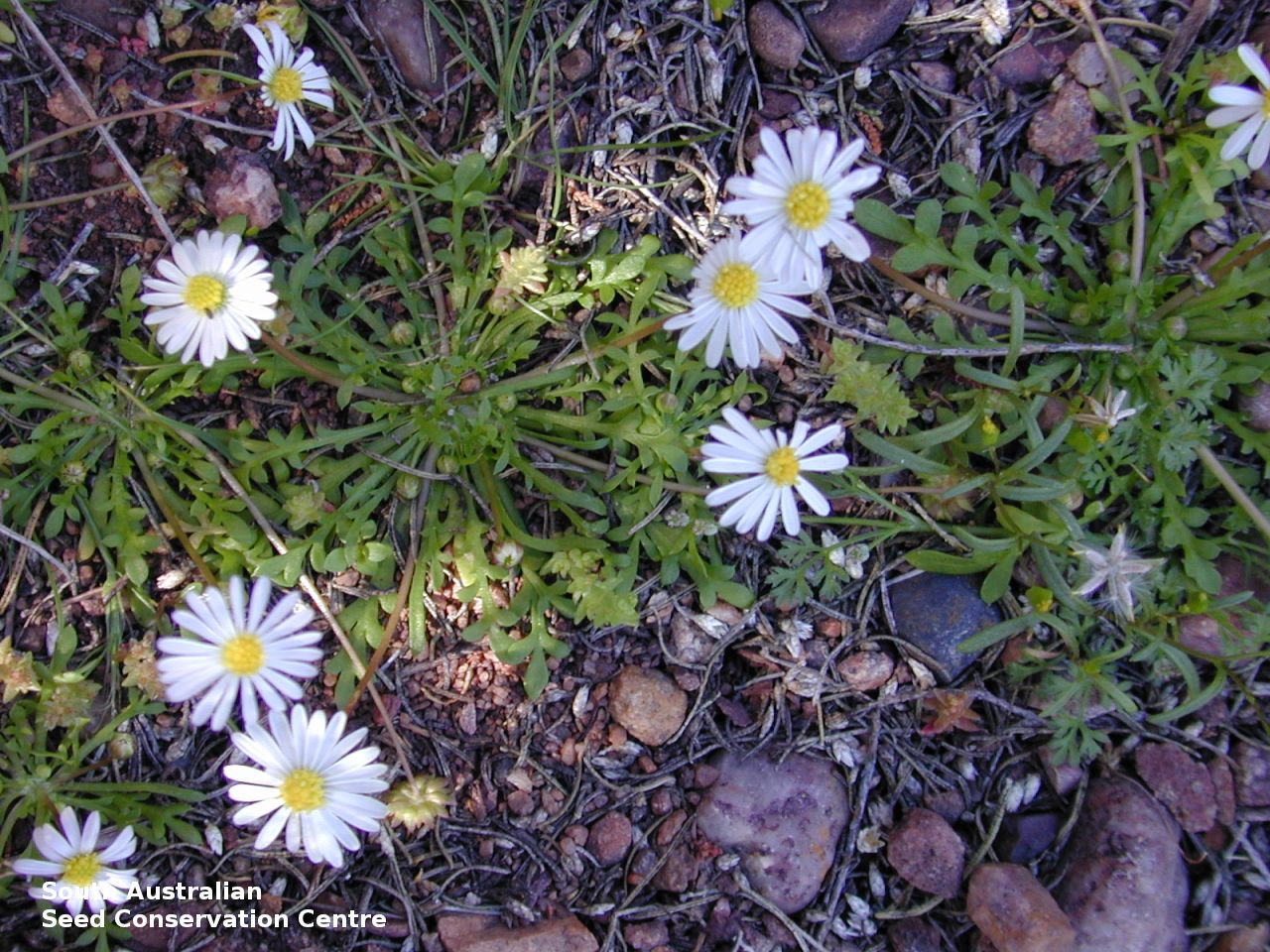
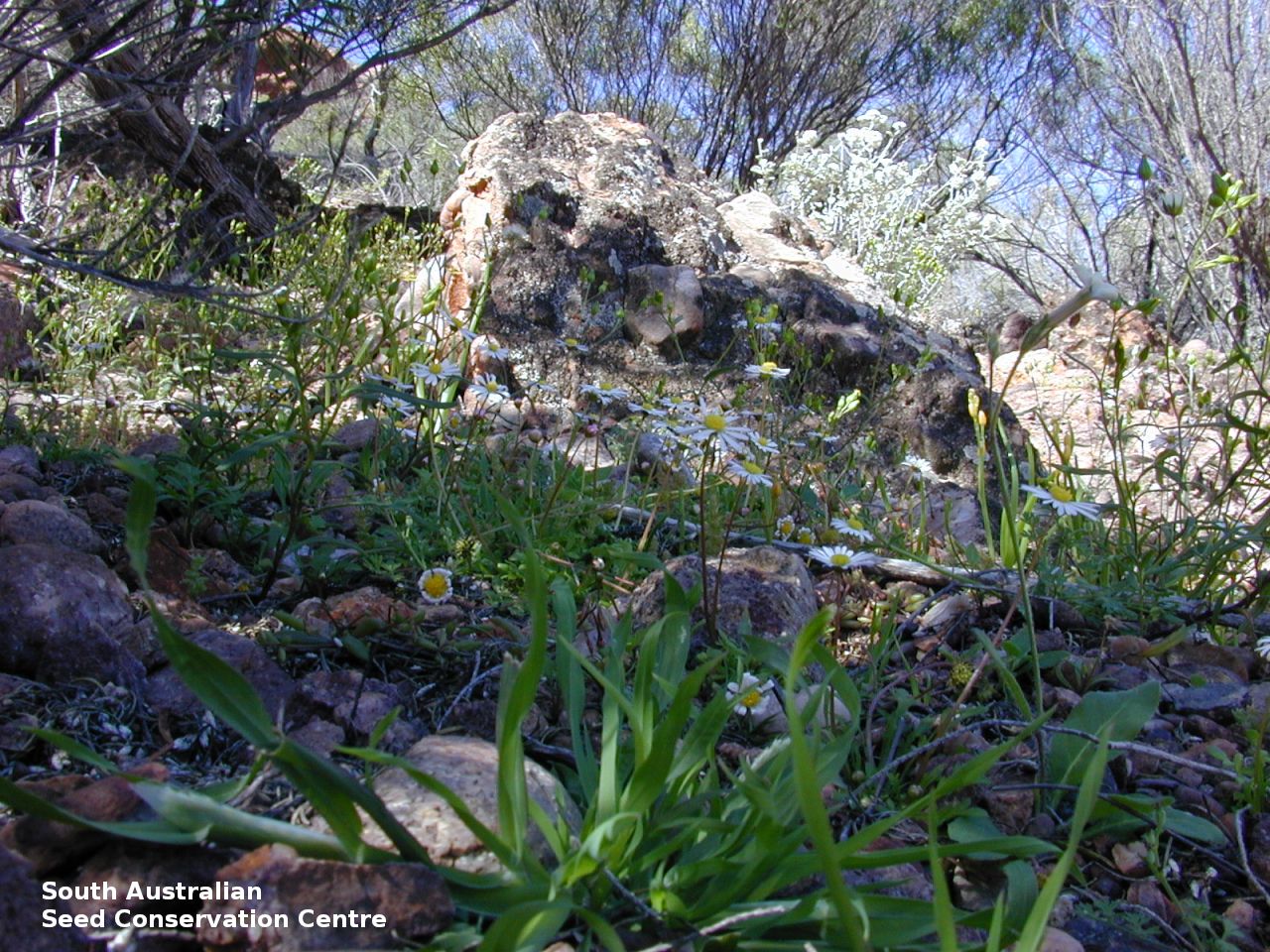
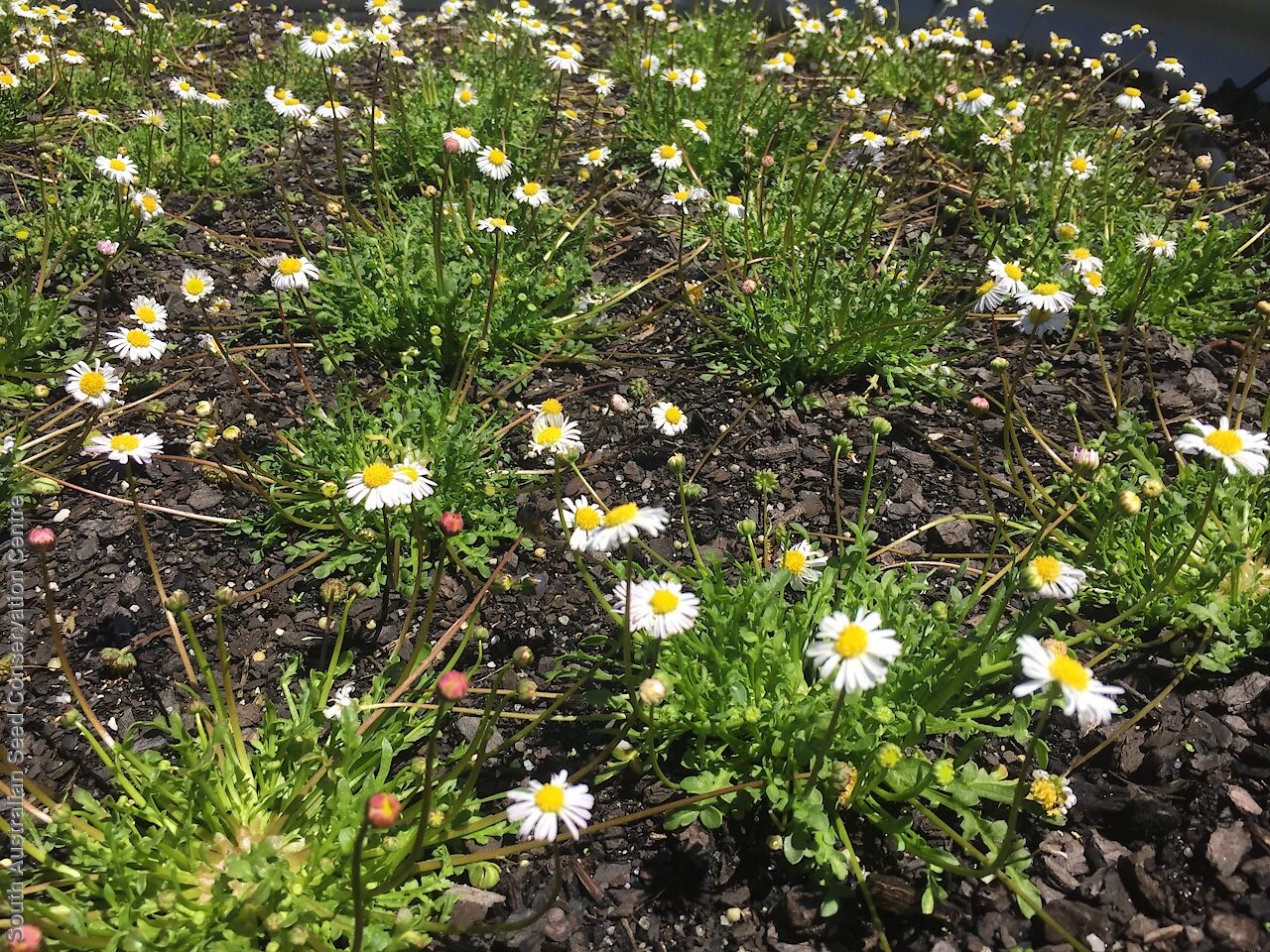
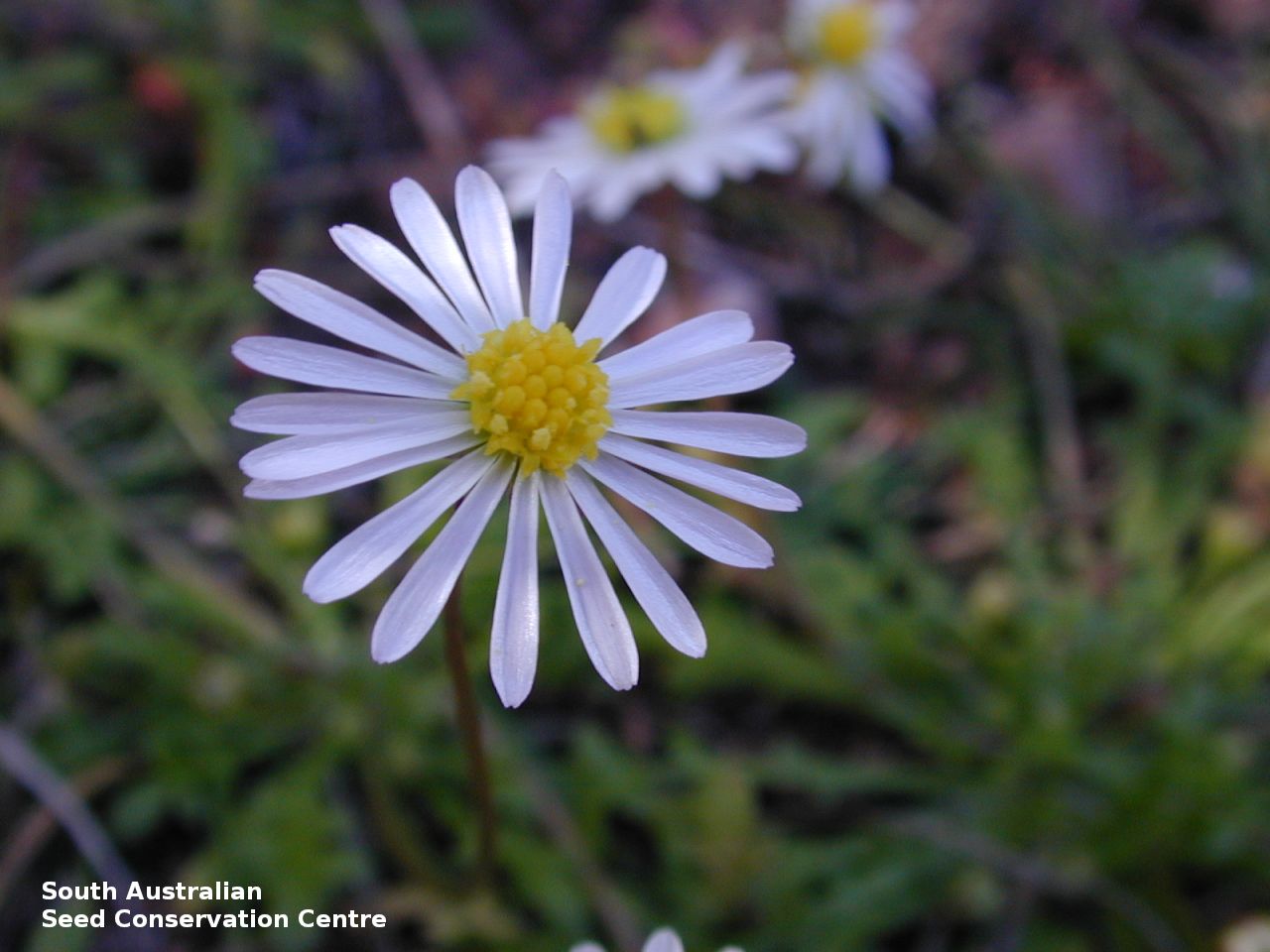
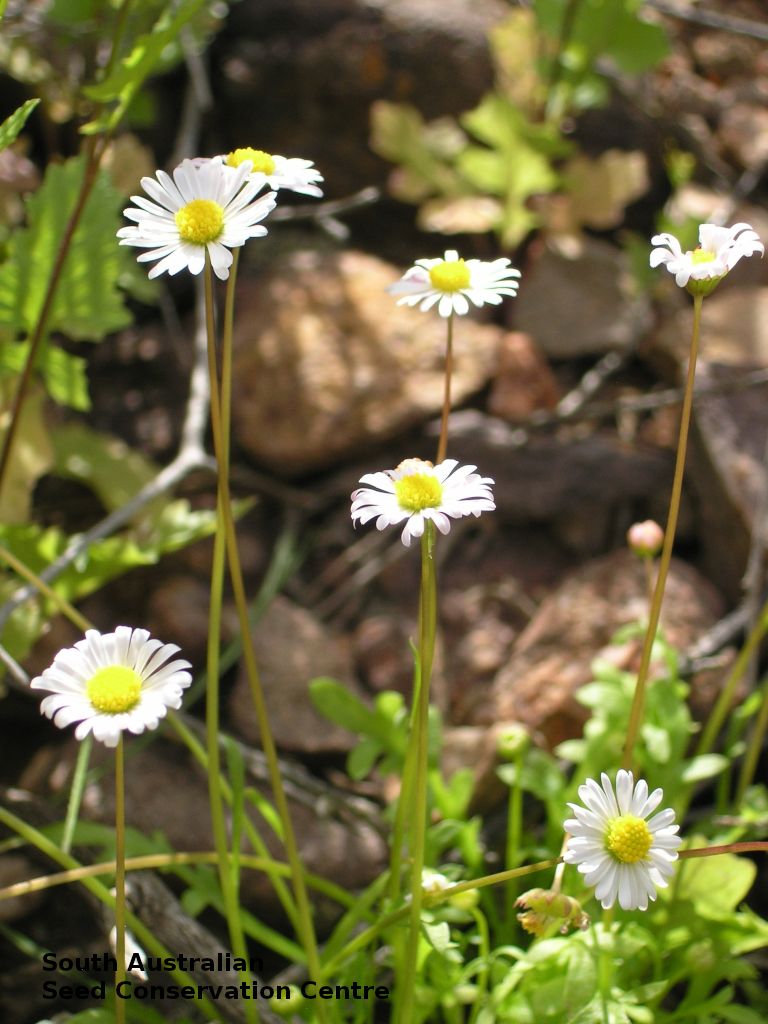
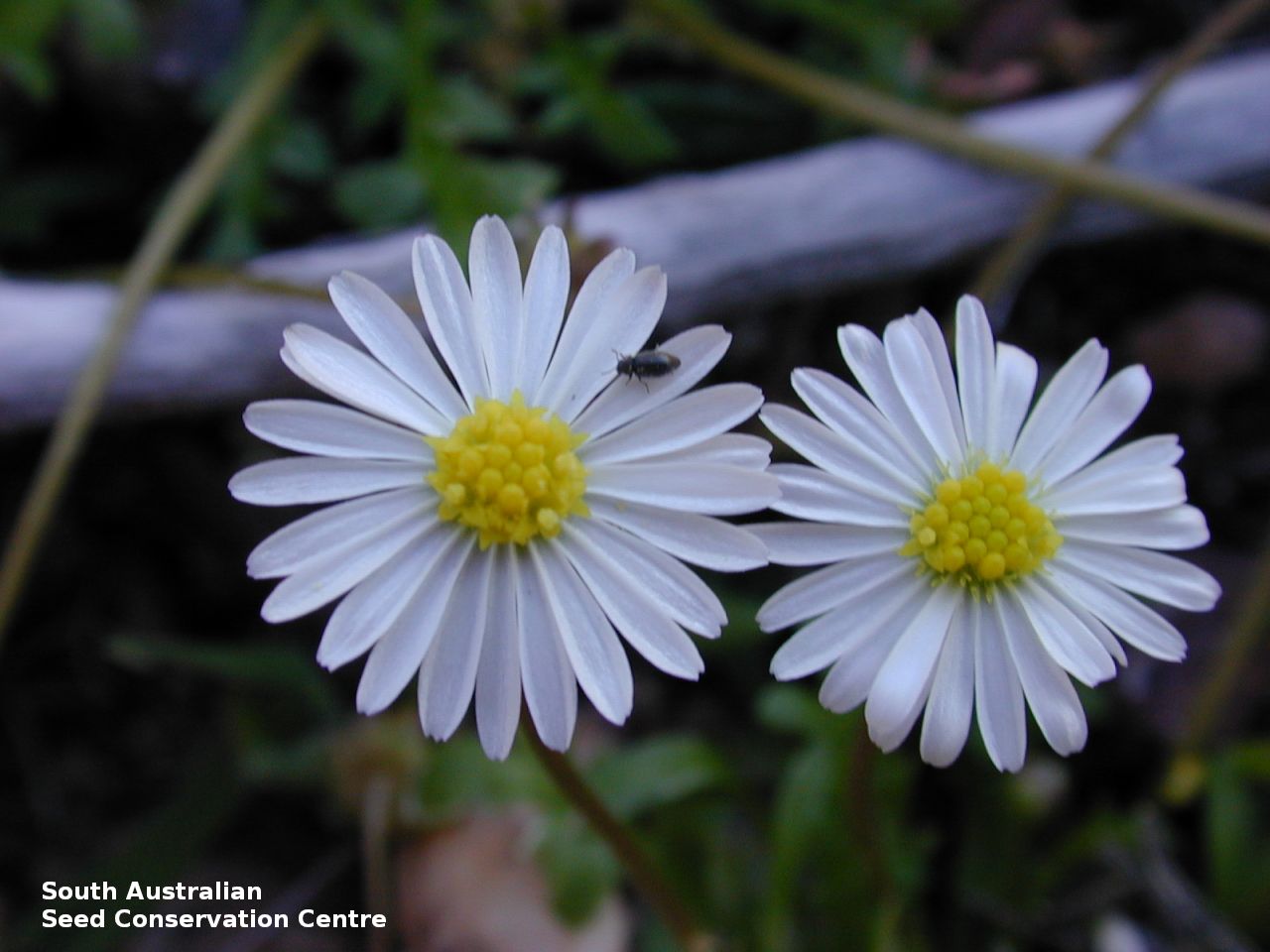
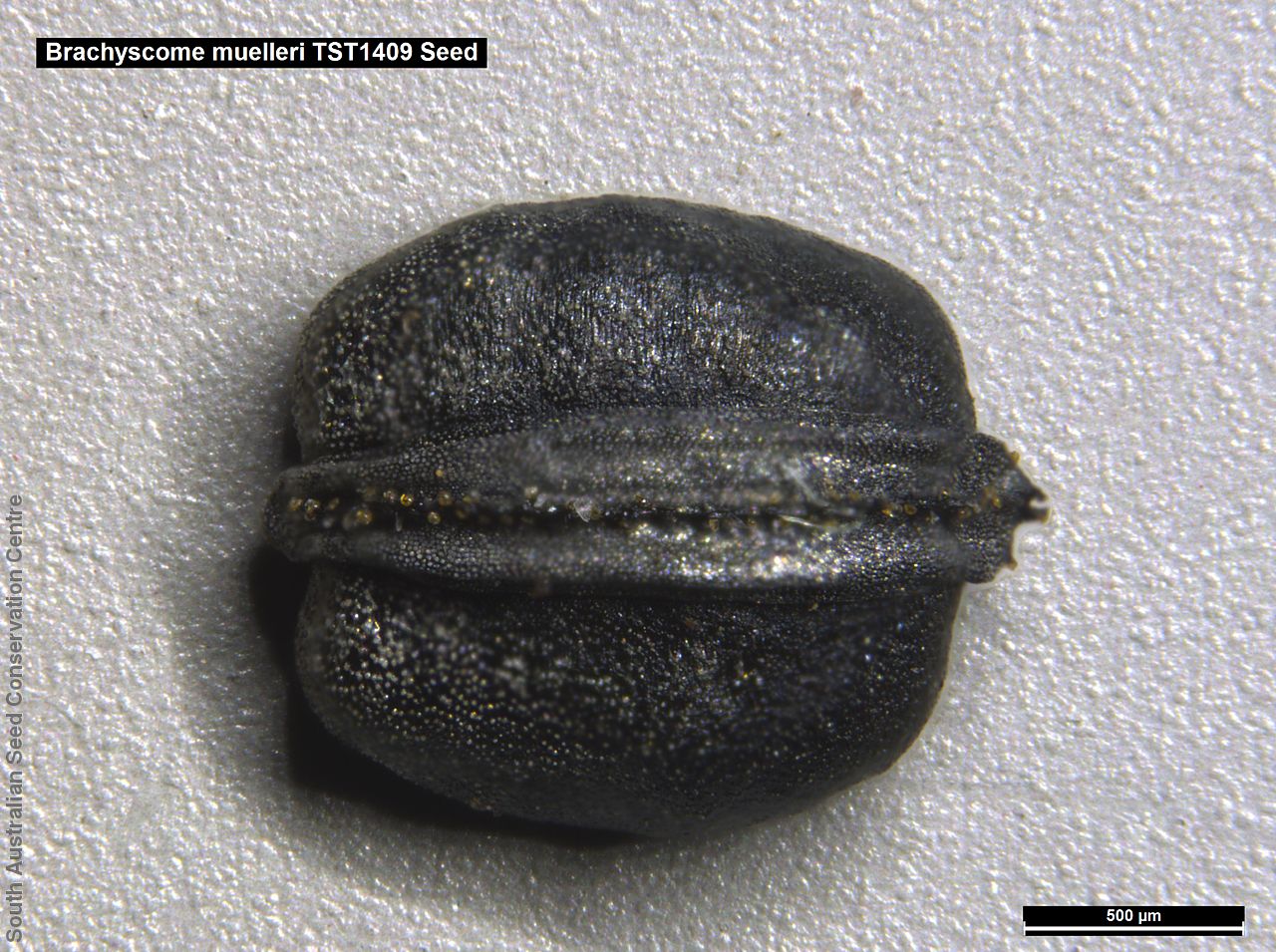
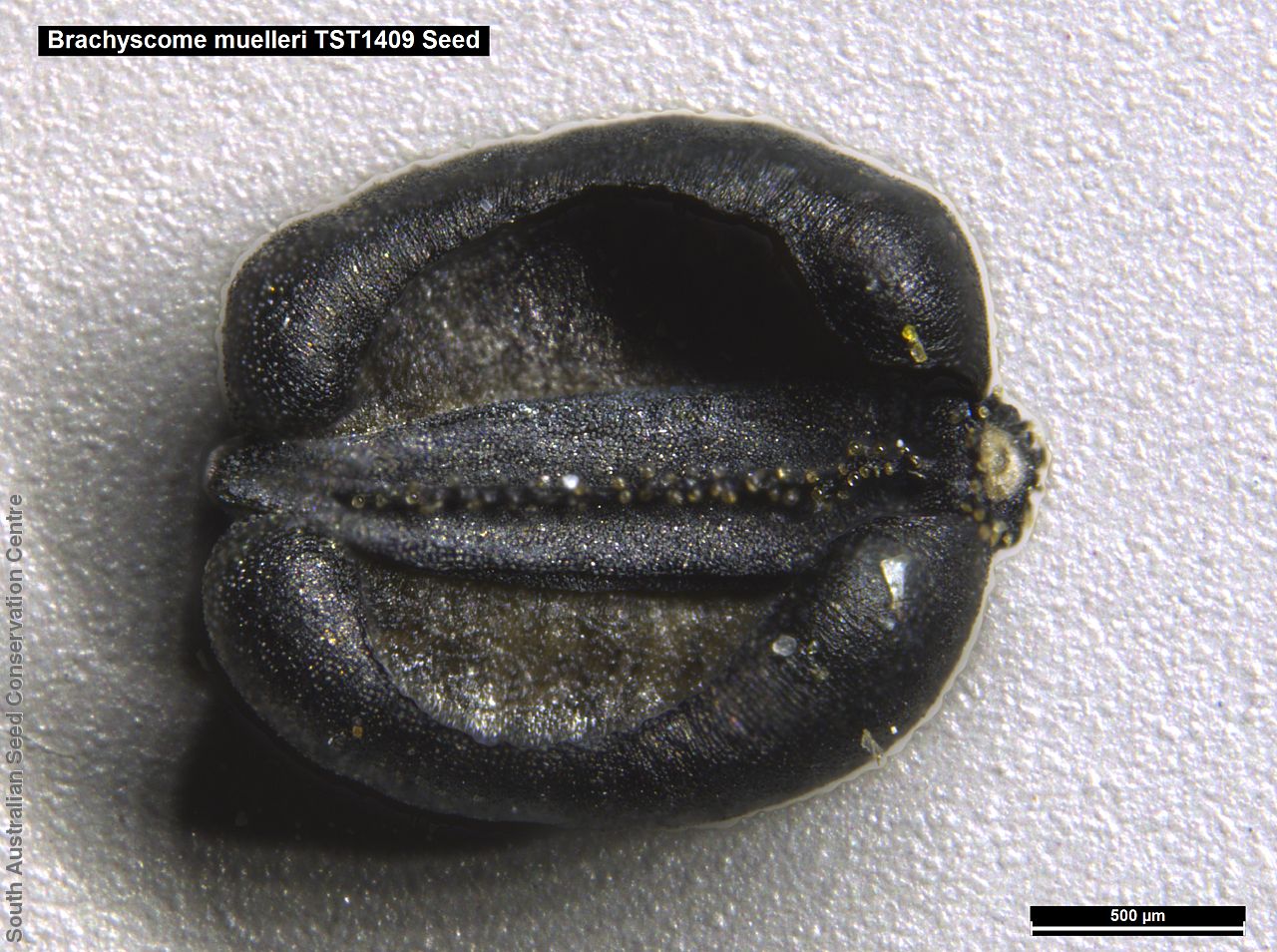
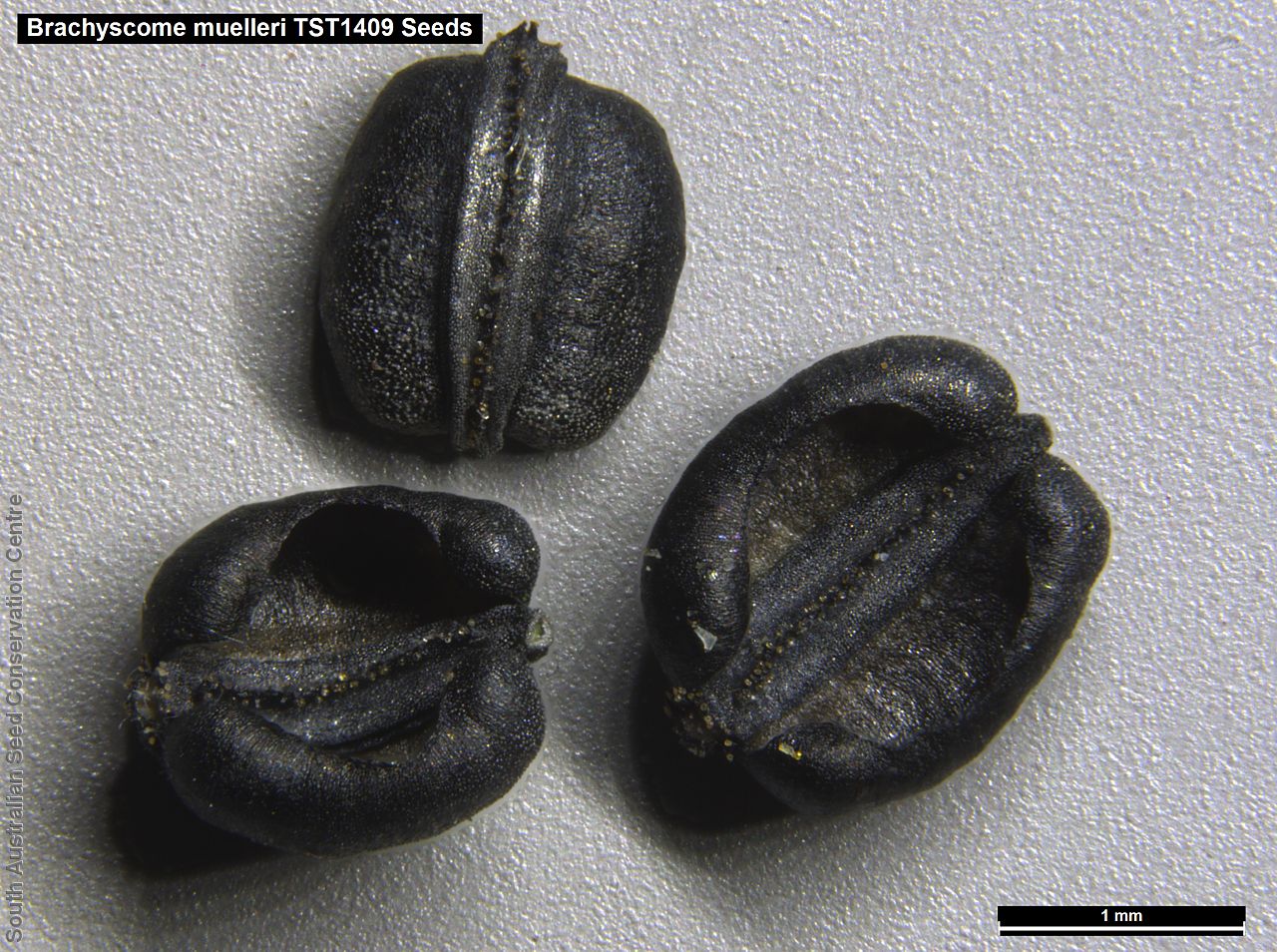
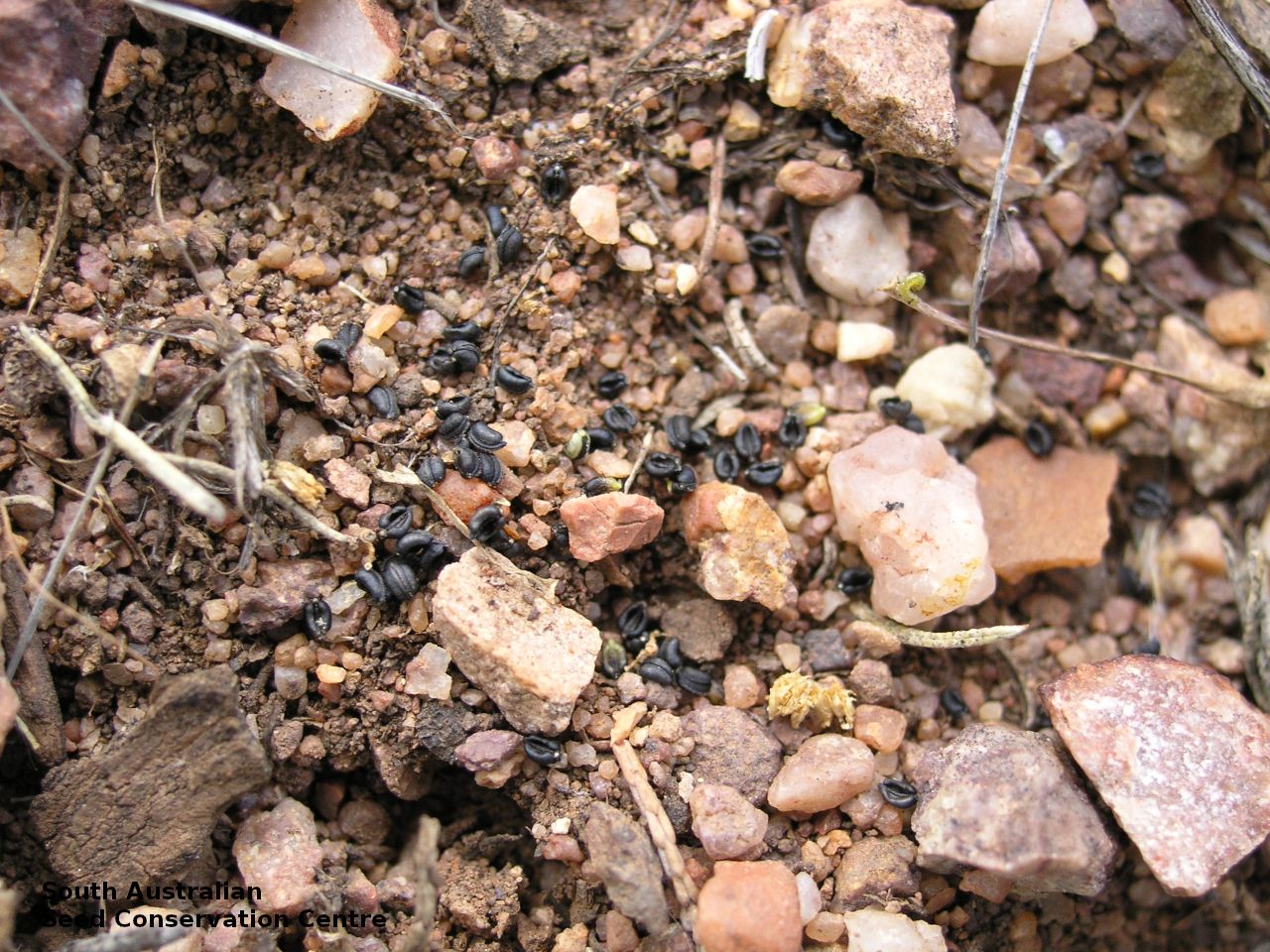

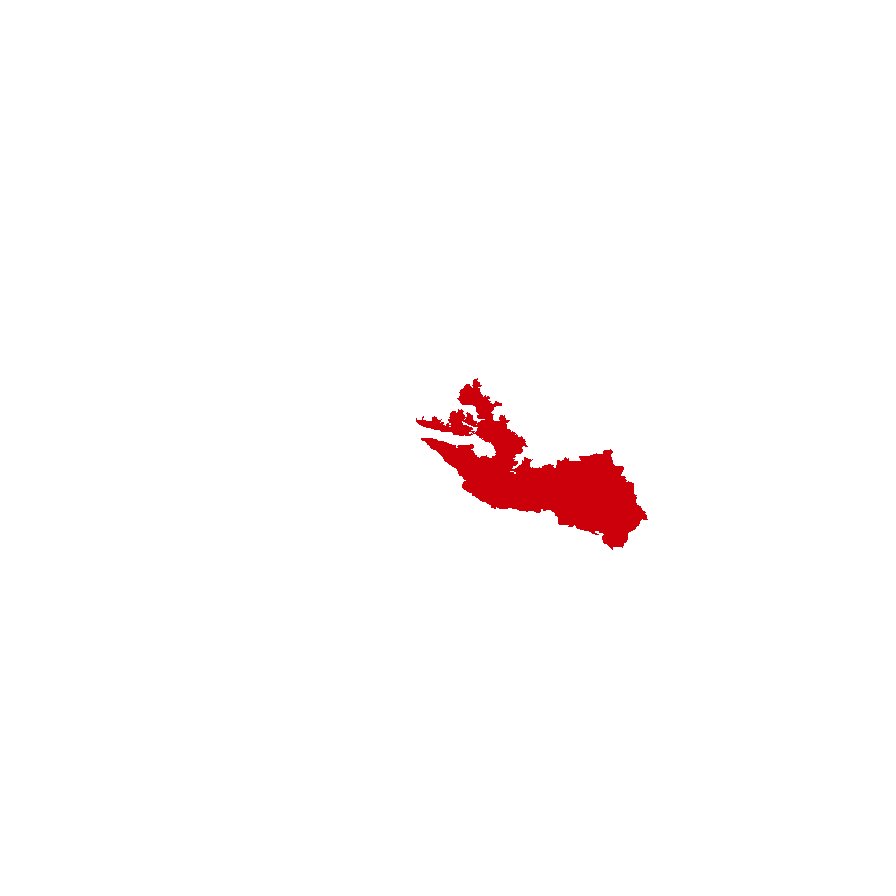
Prior names
Brachycome muelleri
Etymology
Brachyscome from the Greek 'brachys' meaning short and 'kome 'meaning hair, referring to the tuft of short bristles or hairs of the pappus. Muelleri named in honour of Ferdinand von Mueller (1825-1896), botanist, plant collector and Government Botanist of Victoria.
Distribution and status
Endemic to South Australia and known from only one location at Baxter Hills near Iron Knob, growing in loam on moist, shaded cliff slopes. The type specimen was collected by Ferdinand Mueller in 1851 near the Para River in the vicinity of Gawler with another collection gathered from Paskeville by Ernest Beythein. Native. Very rare in South Australia.
Herbarium region: Eyre Peninsula
NRM region: South Australian Arid Lands
AVH map: SA distribution map (external link)
Plant description
An annual herb to 20 cm high with hair-less flowering stems arising from a basal rosette of leaves. Basal leaves are deeply serrated. Flowers are white daisies appearing between August and September. Fruits are small brown-black daisy heads with numerous exposed seeds. Seeds are small black convex seed to 1.5 mm long and 1 mm wide. Seed embryo type is spatulate fully developed.
Seed collection and propagation
Collect seeds between September and December. Pick mature seed-heads by hand, when seeds have turned black. Place the heads in a tray and leave to dry for a week. Then rub the heads gently with your hands to dislodge the seeds. Use a sieve to separate the unwanted material. Store the seeds with a desiccant such as dried silica beads or dry rice, in an air tight container in a cool and dry place. Seed viability is high for this species. This species has physiological dormancy that needs to be overcome for the seed to germinate.
Fire response
Obligate re-seeder.
Longevity: 1 year
Time to flowering: 1 year
Recovery work
In 2020-2021 this species was assessed post-fire in 1 year old fire scars. A total of 45,000 seeds have been collected from seed orcharding & banked in 2020. Germination screening testing the response to fire cues will be undertaken in 2021.This project was supported by the World Wildlife Fund program.
| Location | No. of seeds (weight grams) | Number of plants | Date collected | Collection number Collection location | Date stored | % Viability | Storage temperature |
|---|---|---|---|---|---|---|---|
| BGA MSB | 14,800 (2 g) 3,600 (0.55 g) | 16-Sep-2006 | PJA99 Eyre Peninsula | 1-Aug-2007 | 95% | +5°C, -18°C | |
| BGA | 13,200 (1.78 g) | 200+ | 28-Sep-2010 | PJA203 Eyre Peninsula | 1-Jan-2012 | 95% | +5°C, -18°C |
| BGA | 200 (0.03 g) | 22-Sep-2009 | Corunna Eyre Peninsula | 1-Jan-2012 | 90% | -18°C | |
| BGA | 1,400 (0.19 g) | 179 | 1-Dec-2004 | PJA83 Eyre Peninsula | 2-May-2017 | 75% | -18°C |
| BGA | 5,900 (0.91 g) | 50 | 10-Jan-2019 | TST1409 Eyre Peninsula | 24-Apr-2019 | 100% | -18°C |
| BGA | 3,500 (0.43 g) | 20-Jan-2009 | Glasshouse Eyre Peninsula | 1-May-2019 | -18°C | ||
| BGA | 450,000 (70.28 g) | 150 | 14-Oct-2019 | TST1409 Eyre Peninsula | 28-Jun-2021 | 85% | -18°C, -80°C |
| BGA | 55,500 (8.968 g) | 100+ | 16-Sep-2021 | TST1409 Eyre Peninsula | 7-Jul-2022 | 90% | -18°C, -80°C |
| BGA | 8,800 (1.597 g) | 100+ | 12-Sep-2022 | TST1409 Eyre Peninsula | 20-Jun-2023 | 100% | -18°C, -80°C |
Number of plants: This is the number of plants from which the seeds were collected.
Collection location: The Herbarium of South Australia's region name.
% Viability: Percentage of filled healthy seeds determined by a cut test or x-ray.